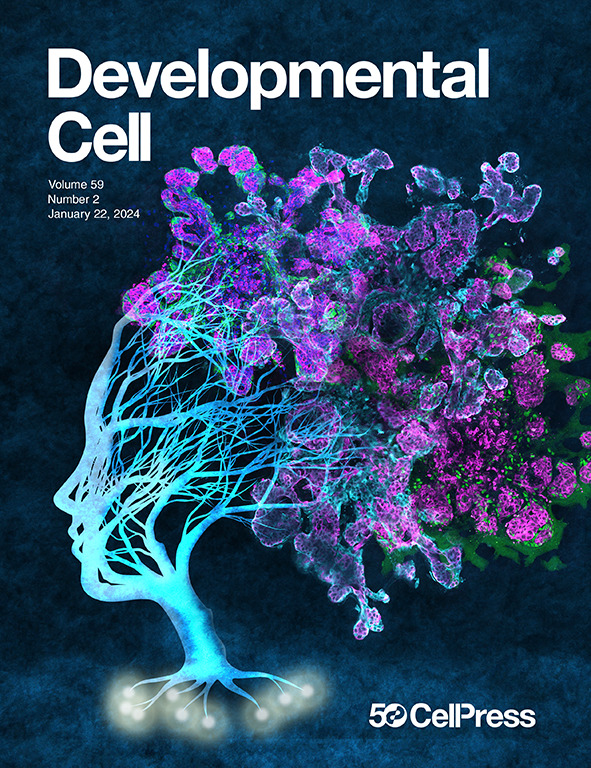Bacterial XopR subverts RIN4 complex-mediated plant immunity via plasma membrane-associated percolation
IF 8.7
1区 生物学
Q1 CELL BIOLOGY
引用次数: 0
Abstract
Phytobacteria release type 3 effectors (T3Es) abundant in intrinsically disordered regions (IDRs) to undermine plant defenses. How flexible IDRs contribute to T3Es’ function in subverting plant immunity remains unclear. Here, we identify a plant plasma membrane (PM)-associated macromolecular condensation mechanism that governs the sophisticated interplay between T3E XopR and the plant’s Resistance to Pseudomonas syringae pv. maculicola 1 (RPM1)-interacting protein 4 (RIN4) immune complex. Upon deployment into plants, XopR undergoes PM association, percolation clustering, and spanning networking on the PM, ranging from subnanomolar to tens of nanomolar. This spatiotemporal building of the XopR network enables an efficient manipulation of plant surface immune regulators, including a coiled-coil nucleotide-binding leucine-rich repeat receptor (CNL)-guardee complex with highly disordered RIN4. When XopR hijacks and fluidizes the RIN4-RPM1 condensates, Arabidopsis shows reduced RIN4 phosphorylation and diminished RPM1-activated defense in vivo, consistent with XopR-impaired RIN4 phosphorylation by RPM1-interacting protein kinase (RIPK). Our research illuminates the mechanism underlying the dynamic interplay between bacterial T3Es and plant receptor complex condensates during infection.

细菌XopR通过质膜相关渗透破坏RIN4复合物介导的植物免疫
植物细菌释放富含内在无序区(IDRs)的3型效应物(T3Es)来破坏植物防御。灵活的idr如何促进T3Es在破坏植物免疫中的作用尚不清楚。在这里,我们确定了一个与植物质膜(PM)相关的大分子缩合机制,该机制控制了T3E XopR与植物对丁香假单胞菌pv的抗性之间复杂的相互作用。黄斑1 (RPM1)-相互作用蛋白4 (RIN4)免疫复合物。在部署到工厂后,XopR经历PM关联,渗透聚类和PM上的跨越网络,范围从亚纳摩尔到几十纳摩尔。XopR网络的时空构建使植物表面免疫调节因子能够有效地操纵,包括具有高度无序的RIN4的卷曲卷曲核苷酸结合的富含亮氨酸重复受体(CNL)-守护者复合物。当XopR控制和流化RIN4- rpm1冷凝物时,拟南芥在体内表现出RIN4磷酸化降低和rpm1激活的防御减弱,这与XopR通过rpm1相互作用蛋白激酶(RIPK)破坏RIN4磷酸化一致。我们的研究阐明了细菌T3Es与植物受体复合物凝聚物在感染过程中动态相互作用的机制。
本文章由计算机程序翻译,如有差异,请以英文原文为准。
求助全文
约1分钟内获得全文
求助全文
来源期刊

Developmental cell
生物-发育生物学
CiteScore
18.90
自引率
1.70%
发文量
203
审稿时长
3-6 weeks
期刊介绍:
Developmental Cell, established in 2001, is a comprehensive journal that explores a wide range of topics in cell and developmental biology. Our publication encompasses work across various disciplines within biology, with a particular emphasis on investigating the intersections between cell biology, developmental biology, and other related fields. Our primary objective is to present research conducted through a cell biological perspective, addressing the essential mechanisms governing cell function, cellular interactions, and responses to the environment. Moreover, we focus on understanding the collective behavior of cells, culminating in the formation of tissues, organs, and whole organisms, while also investigating the consequences of any malfunctions in these intricate processes.
 求助内容:
求助内容: 应助结果提醒方式:
应助结果提醒方式:


